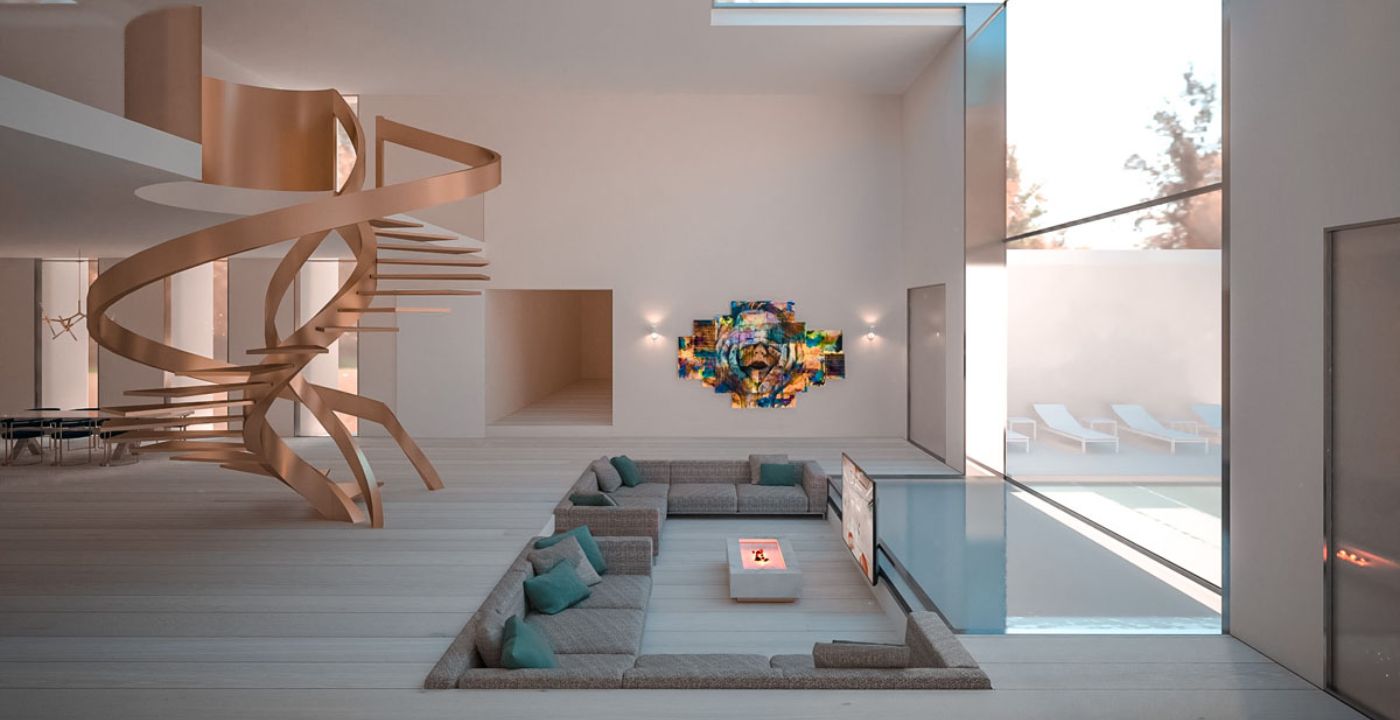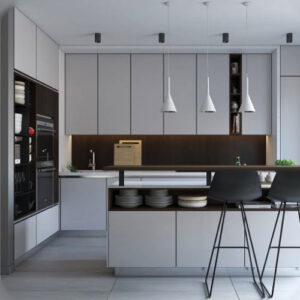Key Summary
- Minimalism is a lifestyle and design philosophy focused on simplicity, intentionality and the elimination of excess.
- Implementing minimalism in your home requires careful consideration and planning.
- Minimalist homes share common features such as simplicity in design, clean lines and neutral colors, indoor-outdoor living and multipurpose furniture.
- Key steps to make minimalism work best for your home include assessing your needs and priorities, decluttering mindfully and streamlining storage solutions.
- To maintain the essence of a minimalist home, there are some elements to avoid. These include clutter (particularly ornate decor), unnecessary technology and impulse shopping.
What is Minimalism?
Minimalism is a lifestyle and design philosophy that focuses on simplicity, intentionality, and the elimination of excess. It’s a conscious choice to live with less – both in terms of physical possessions and mental clutter and encourages individuals to prioritize what truly matters to them, letting go of the unnecessary distractions that can weigh us down.
Minimal Architecture and Home Design
In terms of home design, minimalism embraces clean lines, uncluttered spaces, and a curated selection of essential elements.
It also promotes a sense of calm, balance, and mindfulness, allowing individuals to create a harmonious living environment that reflects their values and enhances their overall well-being.
Minimalism is not about deprivation but rather a “less is more” approach, finding contentment and freedom in a life and space stripped down to its essential and meaningful components.
How to Make Minimalism Work Best for Your Home
While the concept of minimalism may seem appealing, implementing it effectively in your home requires careful consideration and planning. Here are some key steps to make minimalism work best for your home:
- Assess your needs and priorities
- Declutter mindfully
- Focus on quality over quantity
- Embrace negative space
- Streamline storage solutions
- Curate your belongings
- Make mindful material choices
- Harmonize lighting and ambience
- Embrace sustainable practices
Implementing minimalism in your home is an ongoing process and you will need to continuously evaluate your belongings, making intentional choices about what to bring into your space.
Adopting a mindful and purposeful approach allows you to create a minimalist home that aligns with your lifestyle and enhances your overall well-being.
What is Needed for a Minimalist Home? | 10 Key Features
1. Simplicity in Design
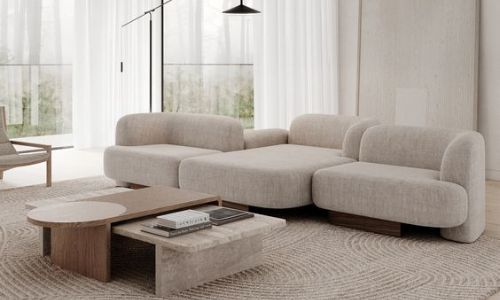
Source: Pinterest
At the core of minimalist homes is the principle of simplicity in design which is characterized by clean lines, uncluttered spaces, and a focus on functionality. Taking a minimalist approach to design means every element in the home serves a purpose and contributes to the overall aesthetic.
Minimalist homes often feature open floor plans, allowing for seamless movement and a sense of spaciousness. The design is stripped down to its essentials, creating an environment that promotes relaxation and tranquility.
2. Functionality
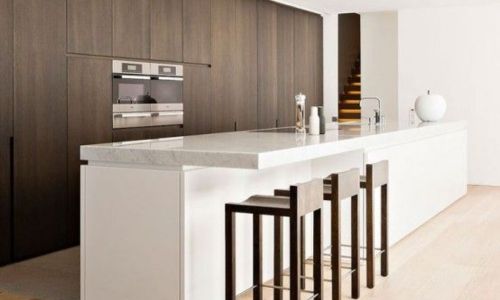
Source: Pinterest
Functionality is another fundamental aspect of minimalist homes. Every item and piece of furniture in a minimalist home is carefully selected with purpose in mind because the focus is on practicality and ensuring that each element serves a specific function.
This approach helps eliminate unnecessary clutter and creates a sense of order and efficiency within the space. Ultimately, a minimalist home is designed to simplify daily life, making it easier to navigate and maintain.
3. Clean Lines and Neutral Colors
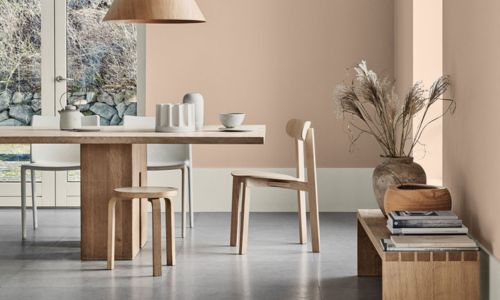
Source: Pinterest
Clean lines and neutral colors are signature features of minimalist homes with the use of straight lines and geometric shapes creating a sense of harmony and balance in the space.
When it comes to color palettes, minimalist homes typically favor neutral tones such as whites, grays, and earthy hues but you could also incorporate some subtle texture for further, muted visual interest.
These colors create a calming atmosphere and allow other elements in the home (such as furniture and decor) to take center stage. The simplicity of the color scheme also contributes to the overall clean and uncluttered aesthetic of the space.
4. Decluttered Spaces
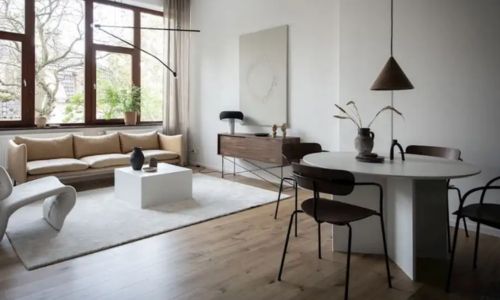
Source: Pinterest
A clutter-free environment is one of the defining characteristics of a minimalist home. Minimalism encourages individuals to let go of excess belongings and only keep what’s necessary and meaningful.
Decluttering space within your minimalist homes promotes a sense of calm and serenity with storage solutions cleverly integrated into the design to ensure that everything has its place, reducing visual distractions and creating a more organized living space, overall.
5. Natural Light
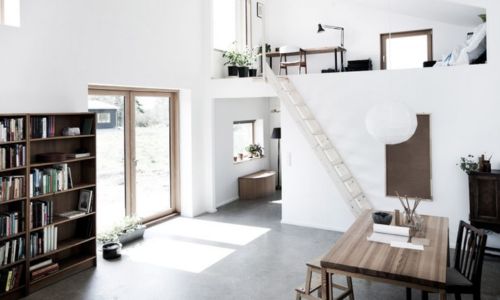
Source: Pinterest
The use of natural light is a key feature in minimalist homes. Large windows and open spaces allow an abundance of natural light to fill the rooms, creating a bright and airy atmosphere.
Natural light not only enhances the aesthetic of the space but also has numerous benefits for our well-being as it boosts mood, improves productivity, and creates a connection with the outdoors.
Minimalist homes embrace the beauty of natural light and often incorporate elements such as skylights and strategically placed windows to maximize its presence.
6. Indoor-Outdoor Living
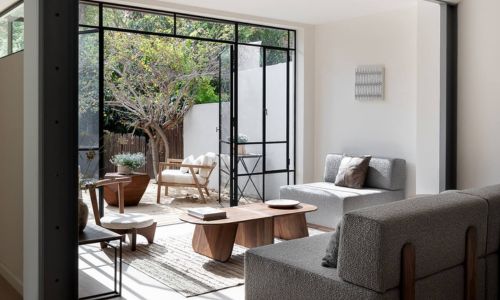
Source: Pinterest
Minimalist homes often blur the boundaries between indoor and outdoor spaces, creating a seamless connection with nature. This design concept is known as indoor-outdoor living and is achieved through features such as large glass doors, outdoor living areas, and greenery.
Through merging the indoors with the outdoors, minimalist homes embrace the tranquility of nature and invite it to become an integral part of daily life.
7. Multipurpose Furniture
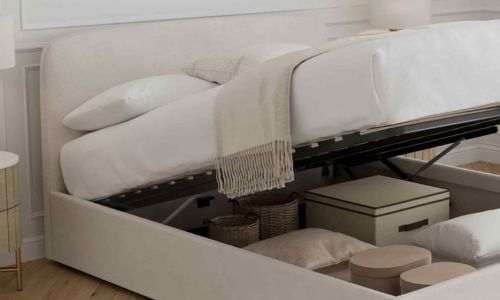
Source: Pinterest
In a minimalist home, every piece of furniture serves a purpose and maximizes functionality. Multipurpose furniture is a popular choice, as it allows for versatility and efficient use of space.
Examples include sofa beds, storage ottomans, and extendable dining tables. Incorporating multipurpose furniture allows minimalist homes to optimize their layout and eliminate the need for excessive furnishings
8. Minimalist Art and Decor
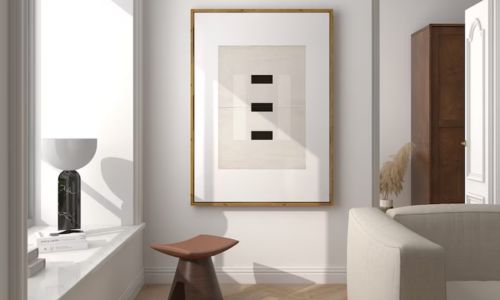
Source: Pinterest
Minimalist art and decor play a crucial role in enhancing the overall aesthetic of a minimalist home and they often feature art pieces with clean lines, simple forms, and a focus on minimalism itself.
Abstract paintings, sculptures, and photographs that convey a sense of calm and balance are commonly found in minimalist interiors. When it comes to decor, less is more. Minimalist homes exhibit carefully-curated items that contribute to the overall aesthetic without overwhelming the space.
9. Sustainability

Source: Pinterest
Sustainability is an ever-present concern in today’s world, and minimalist homes align well with eco-friendly principles.
Many minimalist homeowners embrace sustainable practices by choosing energy-efficient appliances, using environmentally-friendly materials, and incorporating renewable energy sources.
Focusing on sustainability, minimalist homes not only reduce their environmental impact but also create a healthier living environment for the occupants.
10. Negative Space
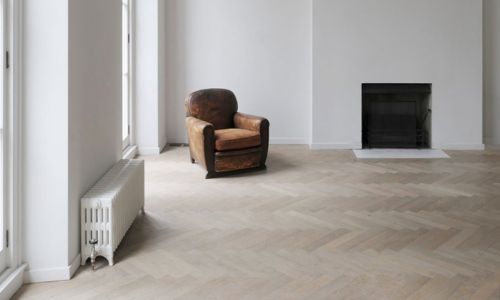
Source: Pinterest
Negative space, which refers to the empty or unoccupied areas in a room, is another crucial element in minimalist home design. It allows for breathing room, creates a sense of balance, and emphasizes the importance of each element within the space. Embracing negative space allows minimalist homes to achieve a harmonious and visually-pleasing aesthetic
What Should You Avoid in a Minimalist Home?
Embracing minimalism can bring numerous benefits to your home and lifestyle but there are certain things you should avoid to maintain the essence of a minimalist aesthetic. Here are some key elements to steer clear of in a minimalist home:
Clutter and Excessive Decorations
One of the core principles of minimalism is to eliminate unnecessary clutter. Avoid filling your space with excessive decorations, trinkets, or any items that don’t serve a specific purpose. Instead, focus on curated pieces that bring joy and meaning to your environment. Keep surfaces clear and uncluttered, allowing the eye to rest and appreciate the simplicity of the space.
Busy Patterns and Bold Color Schemes
Minimalist homes often embrace a neutral color palette and clean lines. Avoid busy patterns or overly bold color schemes that can create visual chaos and distract from the overall minimalist aesthetic, instead opting for calming neutral shades, such as whites and grays, that promote a sense of tranquility and allow the key elements of your space to shine.
Excessive Furniture and Oversized Pieces
In a minimalist home, it’s important to maintain a sense of spaciousness and flow. Avoid overcrowding your rooms with excessive furniture or oversized pieces that dominate the space. Instead, choose furniture that is appropriately scaled to the room and serves a specific function. Embrace simplicity in design and opt for sleek, streamlined furniture that complements the overall minimalist aesthetic.
Unnecessary Technology and Distractions
Minimalism encourages a focus on the present moment and the elimination of unnecessary distractions. Avoid filling your home with excessive technology, screens, or gadgets that can take away from the serene atmosphere.
Instead, channel “digital minimalism” principles and create designated spaces for technology use and consider implementing digital detox periods to foster a sense of mindfulness and relaxation.
Impulse Buying and Unnecessary Purchases
To maintain the essence of minimalism, avoid succumbing to impulse buying and making unnecessary purchases. Practice mindful consumerism, or quiet luxury, by carefully considering each purchase and evaluating whether it aligns with your values and truly enhances your home. Prioritize quality over quantity and opt for well-crafted, long-lasting items that will stand the test of time.
Frequently Asked Questions (FAQs)
What’s the Difference Between Minimalism and a Simplistic House?
While minimalism and a simplistic house may share some similarities, they have distinct differences. Minimalism is a lifestyle and design philosophy that focuses on intentional living, eliminating excess, and embracing simplicity in all aspects of life. A minimalist home embodies clean lines, uncluttered spaces, and a curated selection of essential elements.
On the other hand, a simplistic house refers to a house design that emphasizes simplicity in architectural form and function. It focuses more on the architectural principles of simplicity rather than the overall lifestyle and mindset associated with minimalism.
Can a Small House Still Be Considered a Minimalist Home?
Absolutely! The size of a home does not determine its ability to embody minimalism. Minimalism is not about the physical dimensions of a space, but rather the intentional choices made within it.
A small house can be transformed into a minimalist home by embracing simplicity in design, decluttering, and prioritizing functionality. Carefully selecting essential items and utilizing clever storage solutions means a small minimalist house can create a sense of spaciousness, tranquility, and efficiency.
What are Some Key Minimalist Items for a Home?
Minimalist items for a home can vary depending on individual preferences and needs, however, some common minimalist essentials include versatile furniture pieces with clean lines, functional storage solutions, quality kitchenware and utensils, multipurpose tools, and curated decor items that bring joy and add a touch of personal style.
The focus is on quality over quantity, ensuring that each item serves a specific purpose and contributes to the overall aesthetic and functionality of the space.
Are Minimalist Homes Suitable for Families With Children?
Minimalist homes can be suitable for families with children. In fact, minimalism can offer numerous benefits for families, such as creating a calm and organized environment, teaching children the value of simplicity and mindful consumption, and promoting family bonding by reducing distractions.
It’s important to adapt the principles of minimalism to fit the specific needs and dynamics of your family. Incorporate storage solutions that accommodate toys and belongings, prioritize functionality and durability when selecting furniture, and involve children in the decluttering process to cultivate a sense of responsibility and mindfulness.
Conclusion
Minimalist homes have gained popularity for their ability to create serene and harmonious living spaces. There are many ways to incorporate the philosophy into your home such as simplistic designs, functionality, clean lines, and natural light.
Whether you’re looking to transform your existing home or embark on a new minimalist house design project, embracing these key features will help you create a space that promotes tranquility, balance, and a sense of well-being.
Remember, a minimalist home is not just about the physical aspects but also about adopting a mindset that appreciates simplicity and purpose, and understanding what a minimalist home entails and implementing the necessary changes, will allow you to fully experience the transformative power of minimalist living.

